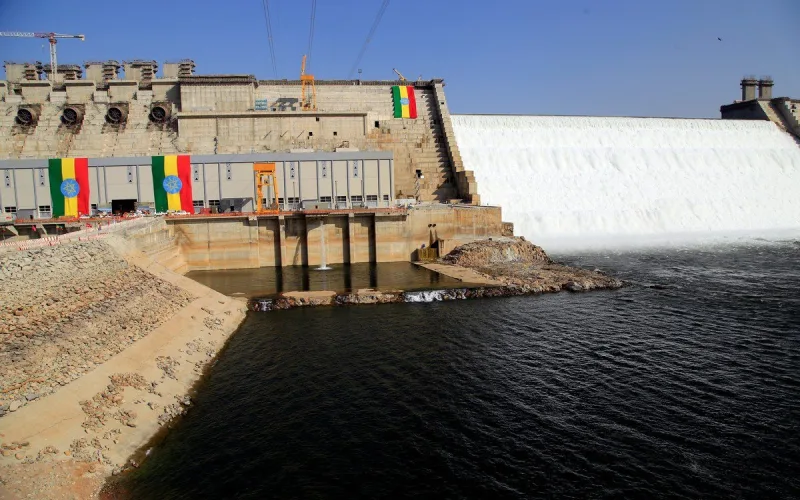Ethiopia has achieved a significant milestone in the construction of the Great Ethiopian Renaissance Dam (GERD), with only 5% remaining to complete the project, Africa’s largest dam on the Nile River.
The National Council for Public Participation Coordinating Office of the Great Ethiopian Renaissance Dam has announced that after 13 years of construction, the GERD is now 95% complete. This includes the completion of 98.9% of the dam’s civil works, with the electro-mechanical works also nearing finalization.
In terms of electricity generation, the GERD is currently producing 540 megawatts with two turbines. Mr. Hailu Abraham, the Public Relations Director of the office, highlighted that once completed, the dam’s electricity output will reach an impressive 5,150 megawatts.
Currently, the dam holds 42 billion cubic meters of water, with expectations that this will increase to 74 billion cubic meters upon completion.
The Ethiopian government, along with public contributions, has invested significantly in the project, with over 643 million birr collected from citizens in the last six months alone.
Since April 2003 until January 2024, a total of 19 billion birr has been collected from domestic, foreign, and bond sales donations, as well as miscellaneous income. However, an estimated 60 billion birr is still required to complete the remaining construction.
Project manager Engineer Kefle Horo mentioned that electro-mechanical installations are currently underway, with the dam currently operational with two units.
“In the coming months, five additional units will commence power generation, bringing the total to seven units” he added.
The construction of the GERD has faced opposition from Egypt and Sudan since its announcement in 2003.
Tripartite negotiations over the past 13 years have failed to yield results. While Egypt blames Ethiopia for the stalled negotiations, Ethiopia argues that Egypt’s insistence on colonial-era agreements is outdated and unfair.
Despite the challenges, Ethiopia remains committed to completing the GERD, which will not only provide much-needed electricity but also assert its sovereignty over the management of the Nile waters, a vital resource for the region’s development.
Ethiopia has a plan to boost its export trade by selling electricity to neighboring countries. Over the past six months, Ethiopia anticipated earning $66 million from the sale of electricity to its neighboring nations.
However, the actual revenue realized by the Federal Electric Power (EEP) stands at $47 million. Ethiopia attributes this revenue shortfall primarily to Sudan’s security challenges, which have hindered its ability to honor its electricity bill.
Furthermore, Djibouti and Kenya, also consumers of Ethiopian electricity, have scaled back their purchases. Kenya, which holds a 25-year electricity purchase agreement with Ethiopia, currently consumes 200 megawatts, with plans to increase its intake to 400 megawatts in the coming years.
Ethiopia is exploring additional markets for its electricity, including Somalia and South Sudan, while discussions are underway with Tanzania.
